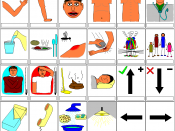Executive Summary
The use of non-verbal cues and how we communicate with each other is discussed. Much of today's communication is done non-verbally. A 1969 study by Dr. Moravian from Stanford University proved communication was 93 percent non-verbal and only 7 percent the actual words you use. Differing aspects of the use of body-language are discussed and the cues that one may interpret to help understand what is trying to be communicated. Discussion on the effects culture plays in body-language is touched upon and the caution that should be used while interpreting these cues. The final analyses suggests that a greater level of understanding can be obtained by understanding non-verbal actions and this understanding will play a part in succeeding in communicating with strangers.
Non-verbal communication
Non-verbal communication is widely used but not always recognized. It is suggested that over 90% of communication is non-verbal and there is a number of studies that delve into the role of the senses in communication (Thorne 2005).
In 1969, Dr. Moravian from Stanford University proved communication was 93 percent non-verbal and only 7 percent the actual words you use as shown in the following graph (Pappas, 2003).
These studies ranged from the differences in the tone of ones voice to facial expressions to smell. This form of non-verbal communication is often affected by ones culture. With these different factors, many of the acts of non-verbal communication create different meanings among differing cultures and may be gender sensitive. We see in business as well as in day-to-day life, how body language plays a vital role in communication. A frown or a smile in a certain situation could have totally different meanings however; sometimes the meanings are shared across the many cultural boundaries. The use of your hands in business and the cues one sends...


